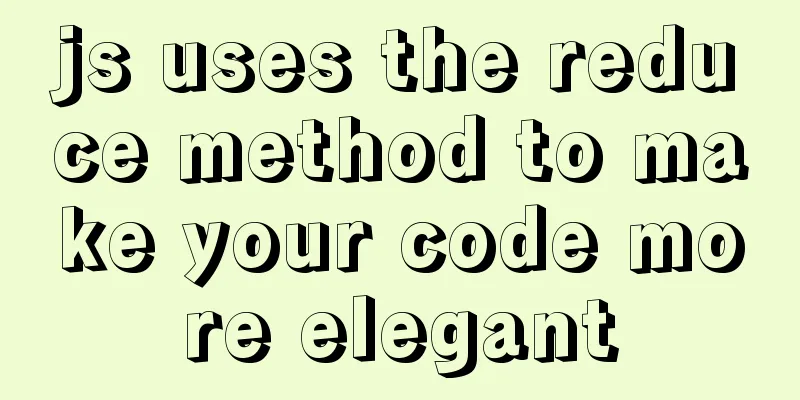Details of watch monitoring properties in Vue

|
First, make sure that watch is an object and use it as such. Key: That's the one you want to monitor; Value: can be a function. When the thing you are monitoring changes, the function needs to be executed. This function has two parameters. The first one is the current value (new value), the second one is the value before update (old value) The value can also be a function name: however, the function name must be enclosed in single quotes. The value is an object containing options: there are three options.
1.watch monitors changes in general data (numeric values, strings, Boolean values)For example: 1. Numerical value In
<div id="app">
<p>{{num}}</p>
<button @click="num++">Click to add one</button>
</div>
let vm = new Vue({
el:'#app',
data:{
num:0
},
watch:{
// Current value (changed value) newval old value oldval
num:function(newval,oldval){
console.log("The new value is: "+newval);
console.log("Old value is: "+oldval);
}
}
})
When we click the button, check the console:
watch:{
// Current value (changed value) newval old value oldval
// num(newval,oldval){
// console.log("The new value is: "+newval);
// console.log("Old value is: "+oldval);
// }
num:{
handler(newval,oldval){
console.log("The new value is: "+newval);
console.log("Old value is: "+oldval);
}
}
}
The output results are consistent. The following examples all use the third method, which is the method with a 2. Strings
<div id="app">
<input type="text" v-model="mes">
<p>The input content is: {{mes}}</p>
</div>
let vm = new Vue({
el:'#app',
data:{
mes:''
},
watch:{
mes:{
handler(newval,oldval){
console.log("New content: "+newval);
console.log("old content: "+oldval);
}
}
}
})
When we enter content in the text box:
View the output:
3. Boolean values
<div id="app">
<p v-show="isShow">Show and hide by modifying Boolean value</p>
<button @click="isShow = !isShow">Click to change the Boolean value</button>
</div>
let vm = new Vue({
el:'#app',
data:{
isShow:true
},
watch:{
isShow:{
handler(newval,oldval){
console.log("New value: "+newval);
console.log("old value: "+oldval);
}
}
}
})
When the button is clicked, check the console:
2.watch monitors changes in complex data types
1. Object
<div id="app">
<input type="text" v-model="mes.name">
<p>The input content is: {{mes.name}}</p>
</div>
let vm = new Vue({
el:'#app',
data:{
mes:{name:''}
},
watch:
mes:{
// When watching the monitoring property monitoring object, the new and old values are the same handler(newval){
console.log("New value: "+this.mes.name);
},
deep:true
}
}
})
After entering something in the text box, check the console:
You can also add num to the object, control the value of num through the slider, and listen:
<input type="range" v-model="mes.num">
data:{
mes:{name:'',num:''}
},
watch:
mes:{
// When watching the monitoring property monitoring object, the new and old values are the same handler(newval){
console.log("num new value: "+this.mes.num);
},
deep:true
}
}
View the output as you slide:
2. Array
<body>
<div id="app">
<ul>
<li v-for="(item,index) in arr">{{item}}</li>
</ul>
<!-- Add a button that adds a new content to the array when clicked -->
<button @click="add()">Click to add</button>
</div>
<script src="./js/vue.js"></script>
<script>
let vm = new Vue({
el:'#app',
data:{
arr:[1,2,3,4,5]
},
methods:{
add(){
// Get the current maximum value of the array let cont = this.arr[this.arr.length-1];
// Self-increment cont++;
// Add an element to the last position of the array this.arr.push(cont);
}
},
watch:
arr:{
// When monitoring an array, you don't need to monitor deeply.
handler(newval){
console.log("The new array is: "+newval);
}
}
}
})
</script>
</body>
After clicking Add Element, check the output:
3. Object Array
<body>
<div id="app">
<ul>
<li v-for="item in list">
{{item.id}}--{{item.name}}
</li>
</ul>
<!-- Define the text box and add a new object to the array -->
<input type="text" v-model="id">
<input type="text" v-model="name">
<button @click="add()">Add</button>
</div>
<script src="./js/vue.js"></script>
<script>
let vm = new Vue({
el:'#app',
data:{
list:[
{id:1,name:"哇哈"},
{id:2,name:"哇哈哈"},
{id:3,name:"哇哈哈哈哈"}
],
id:"",
name:''
},
methods: {
// Add the received input to the array add(){
this.list.push({id:this.id,name:this.name});
// Clear the contents of the text box this.id=this.name=''
}
},
watch:{
// Note: The data monitored in the watch object must be the data that already exists in the data center data // The new and old values of the watch monitoring array object are equal, but when monitoring the array, deep monitoring is not required!
list:{
handler(newval){
newval.forEach((item)=>{
console.log(item.name);
})
}
}
}
})
</script>
</body>
View the output after adding a new element:
4. Properties of object arrays
<body>
<div id="app">
<ul>
<li v-for="x in list">
{{x.id}}---{{x.name}}  
<button @click="mod(x.id)">Modify</button>
</li>
</ul>
</div>
<script src="./js/vue.js"></script>
<script>
let vm = new Vue({
el:'#app',
data:{
list:[
{id:1,name:'ww'},
{id:2,name:'ee'},
{id:3,name:'qq'}
],
},
methods: {
mod(id,name){
this.list.forEach((item)=>{
// Make a judgment during the traversal process. If the id you clicked is the data you are currently editing if (item.id == id) {
item.name = "Old Iron"
console.log(item);
}
})
}
},
watch:
list:{
handler(x,y){
x.forEach((element)=>{
console.log(element.name);
})
},
deep:true
}
}
})
</script>
</body>
When you click Modify, view the output:
This is the end of this article about the details of the watch monitoring properties in Vue. For more relevant content about the watch monitoring properties in Vue, please search for previous articles on 123WORDPRESS.COM or continue to browse the following related articles. I hope you will support 123WORDPRESS.COM in the future! You may also be interested in:
|
<<: A brief discussion on whether CSS will block page rendering
>>: Introduction to the use of HTML element noscript
Recommend
Detailed explanation of mysql replication tool based on python
Table of contents 1. Introduction Second practice...
Key issues and solutions for web page access speed
<br /> The website access speed can directly...
Detailed explanation of commands to view linux files
How to view linux files Command to view file cont...
Mysql join table and id auto-increment example analysis
How to write join If you use left join, is the ta...
JavaScript deshaking and throttling examples
Table of contents Stabilization Throttling: Anti-...
A brief discussion on the performance issues of MySQL paging limit
MySQL paging queries are usually implemented thro...
Solution to primary key conflict when innodb_index_stats reports an error when importing backup data
Fault description percona5.6, mysqldump full back...
Full analysis of Vue diff algorithm
Table of contents Preface Vue update view patch s...
JavaScript data structure bidirectional linked list
A singly linked list can only be traversed from t...
Difference between HTML ReadOnly and Enabled
The TextBox with the ReadOnly attribute will be di...
MYSQL's 10 classic optimization cases and scenarios
Table of contents 1. General steps for SQL optimi...
MySQL latest version 8.0.17 decompression version installation tutorial
Personally, I think the decompressed version is e...
Summary of Vue's monitoring of keyboard events
Key Modifiers When listening for keyboard events,...
Steps to build the vite+vue3+element-plus project
Use vite to build a vue3 project You can quickly ...
Detailed explanation of MySQL Strict Mode knowledge points
I. Strict Mode Explanation According to the restr...


















